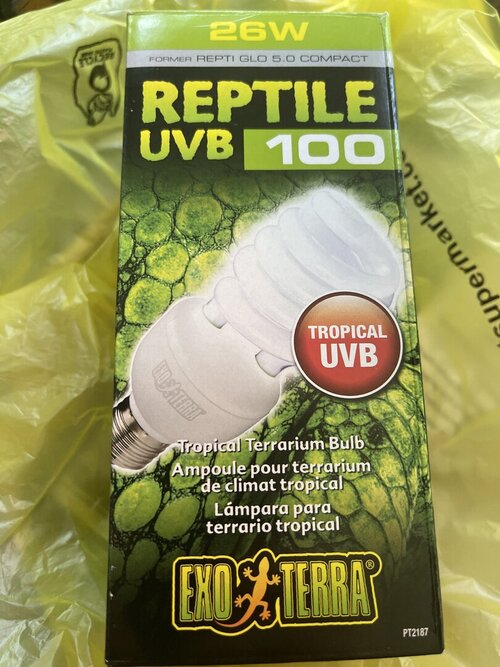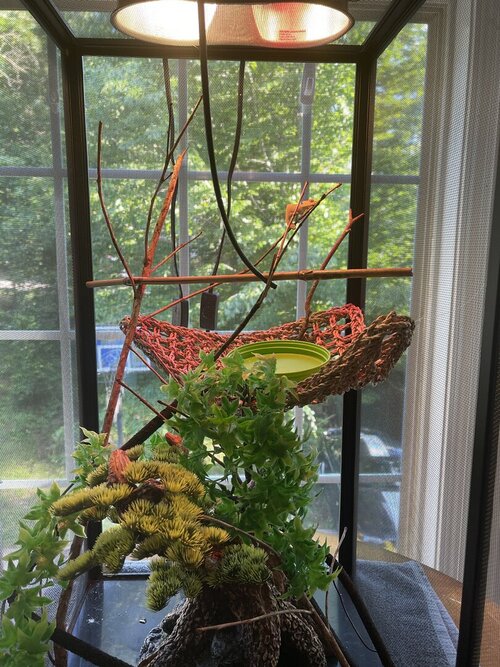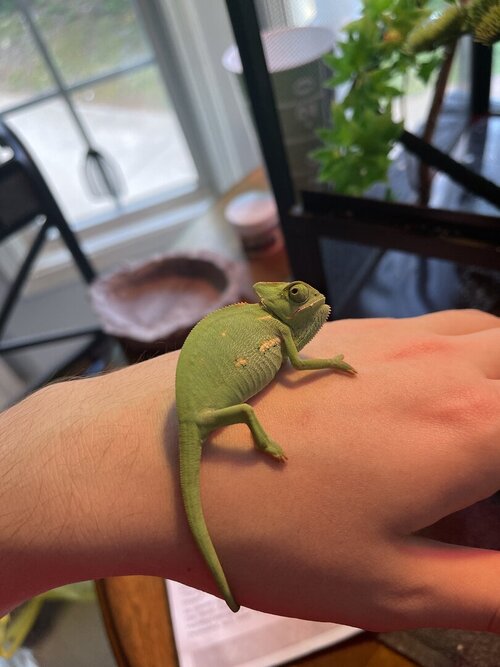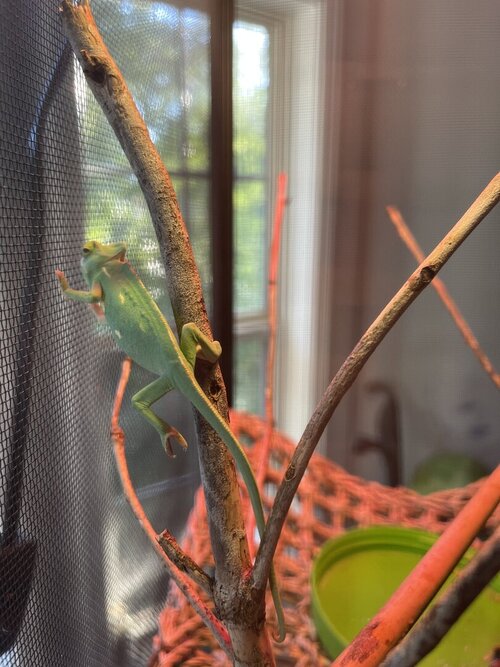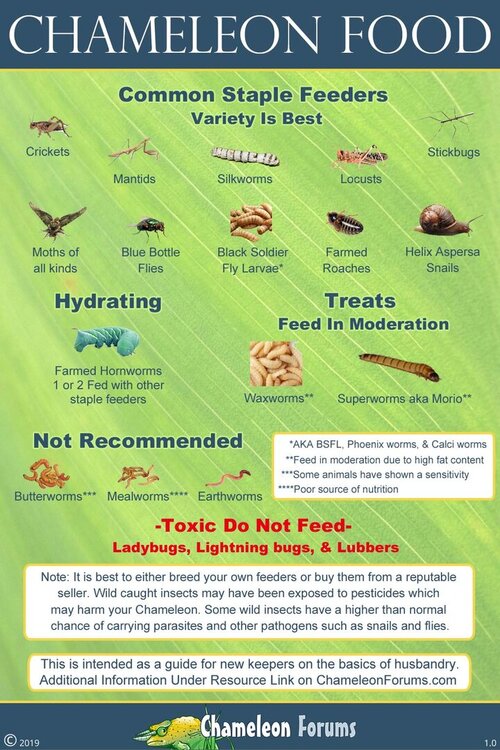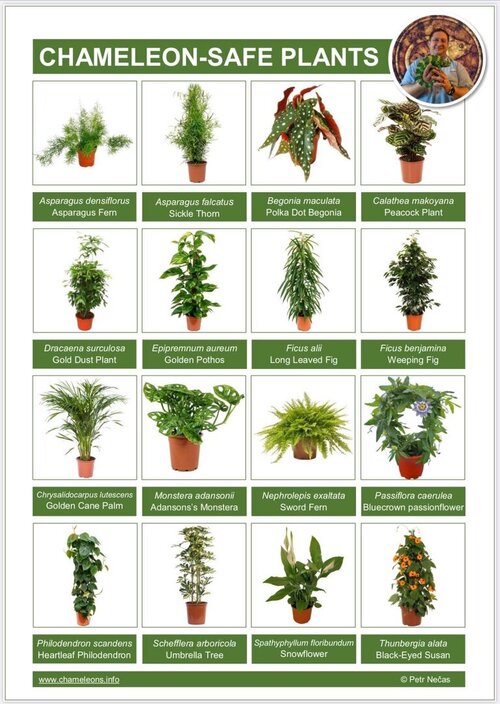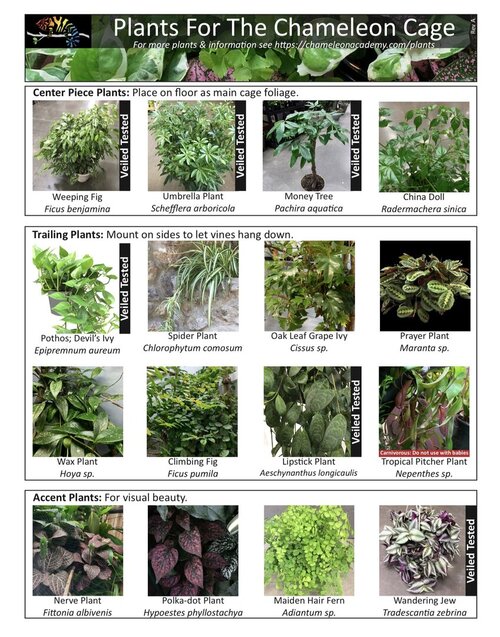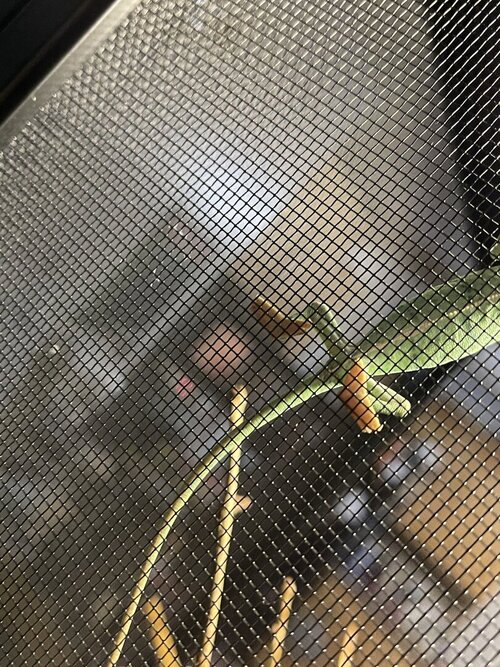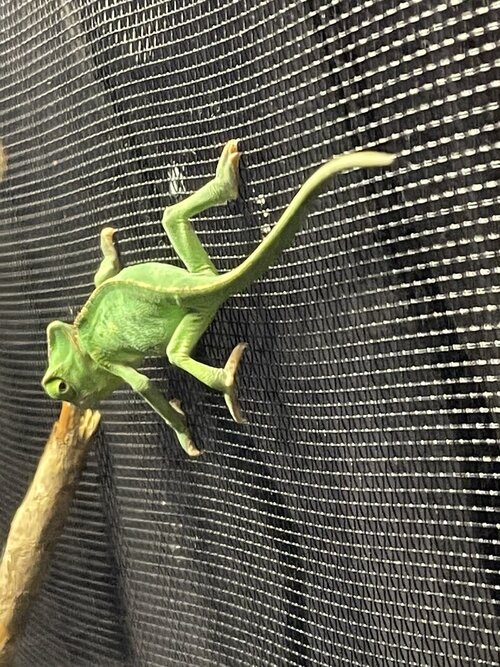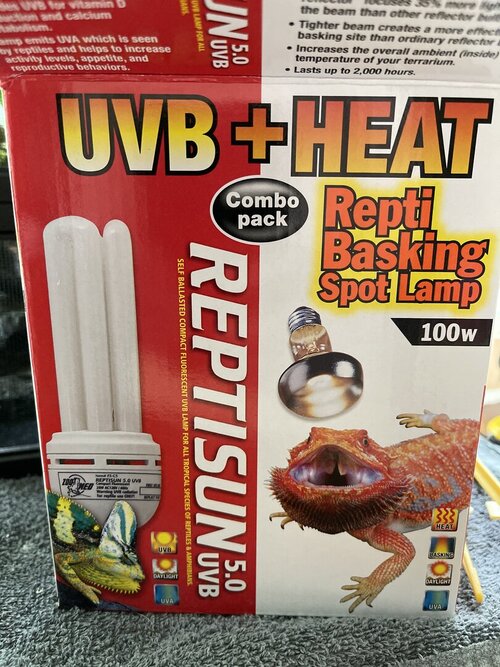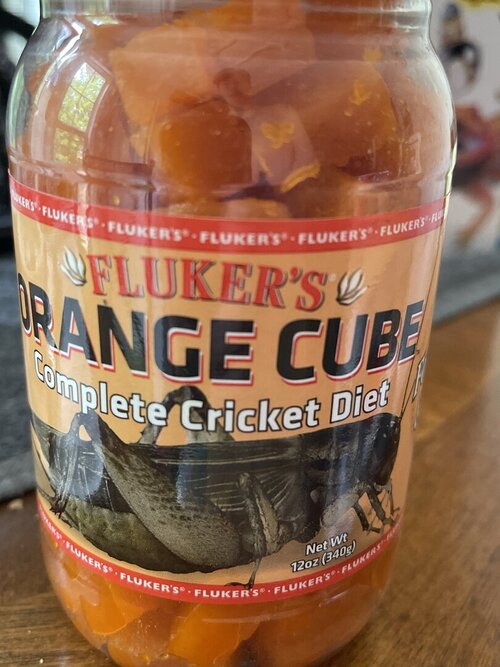T1 Anime
Member
So I have a new chameleon after working up the courage and deciding to buy a new veiled chameleon they didn’t really know how old he was but they weren’t feeding him and he looked skinny so I bought him and took him home. )I have yet to think of a name please send some suggestions). I’ve put him in my cage and my setup has a UVB bulb (in the pic shown) and I’ve got a red basking light to help with keeping the temp up in the cage and I have a dripped set up and I mist the cage about 4-5 times daily to keep the humidity up in there. I’ve been changing up his diet I’ve only had him for 5 days but I feed him crickets which I try and gutload with potatoes and fruits and veggies before feeding him and I’ve been giving him meal worms too all dusted in calcium and he’s been eating roughly around 3-4 crickets a day and 4-5 small meal worms on top of that. The temperature in the cage is usually around 80-82 all day long and the stick right under the basking light usually gets close to 85-86 and at night the cage is usually down to around 74-77 and that’s with no lights on

